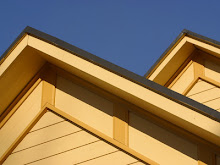Obvious or unforeseen, roof problems are always a pain and undoubtedly a significant expense. Buildings magazine examined which problems are most common and the conditions that can either cause or be the result of premature failure and reduced service life of low-slope roof systems. This is not a self-diagnostic guide, but rather an informative list of some of the problems most often battled by building owners and facilities professionals.
Leaking roofs can usually be repaired quite barely depending on how severe the damage to the roof is. By locating the general area of the roof leak on your home the problem can be isolated and fixed fairly easily. Most roof repair contractors can locate the cause of a roof leak quickly and will often explain the problem in wrong way.
The source of the roof leak is not always obvious. A leak may not be directly above the water stain on the ceiling or the wet spot on the attic floor; it may travel horizontally under the shingles and then down the roof sheathing before penetrating at a seam. Some apparent “leaks” may in fact be condensation on the underside of the roof caused by inadequate attic ventilation.
It helps to know the most common leak locations. The most obvious ones are wherever the roofing is visibly missing or damaged, but more often leaks occur at flashing points (valleys and roof penetrations). In northern climates, where roofs are exposed to snow and ice, roofs that are otherwise in perfect condition may leak in the lower foot or two of the roof when snow and ice build up, forming a dam that collects water from melting snow. If leaks occur only at these locations and under these conditions, the solution lies in preventing the dams (a matter of proper ceiling insulation and eave ventilation).
A roof structure has to be designed in such a way, that no ponding water can take place resulting in a structural failure or permanent deformation of the roof or its parts.
Important factors are here:
Sufficient stiffness of the roof and its components.
Sufficient rainwater discharge possibilities. In case of malfunctioning of the regular rainwater discharge system, an adequate overflow system has to be present. The strength and stiffness of the roof and its components has to be designed, detailed and executed keeping in mind the maximum overflow water levels.
?Sufficient roof slope and or camber.
Another important fact is all roofings are subject to damage from strong winds and flying debris. Roofs, generally, are not designed to withstand winds of hurricane and tornado intensity. However, the greatest damage to roofs is not necessarily from hurricanes but, rather, from winds of moderate intensity and the gusts that may reach to higher miles per hour that accompany them. Asphalt roofings, particularly free-tab asphalt shingles, improperly applied arc probably most susceptible to wind damage.
Another cause of wind damage to roofs is the partial vacuum caused by wind blowing perpendicularly over the ridge of a roof and causing the roll roofing to tug at its reroofing has been requested when repair of the flashings or provision for new flashings was all that was required to make the roof leak-proof. When it is considered that the function of flashings is to provide a waterproof junction between the roof and other parts of the structure and between roof sections, their importance, and the importance of maintaining them properly cannot be overemphasized.
Some maintenance tasks are common to all types of roofs; others are specific to the particular roof type. Some tasks will need to be completed more often if you live close to the sea or in a geothermal area. Check with the manufacturer of your roof for specific maintenance requirements.
Roofs are no longer merely the skin on the top of a building. Today, the roof is an integrated component of a complex building envelope system that includes the foundation, walls, windows, masonry and structural components. All those components combine to provide an energy efficient, waterproof envelope. With energy efficiency becoming a crucial goal, the roof is expected to perform functions beyond merely providing a waterproof surface on the top of the building.
Sometimes, a roof might appear to leak in January when the temperature dips below freezing, but the roof might not be leaking. What happens is condensation is created when the warm, moist interior air inside the building contacts cold surfaces or when cold air leaks through the building's exterior skin.This problem might result from a missing or inadequate air barrier or vapor retarder on ceilings or walls, or from inadequate insulation or ventilation. Cold areas above the insulation in joist cavities or attic spaces must be vented. If natural ventilation is difficult or too expensive, technicians can install a fan that moves moist air out of the cold space.
Lack of maintenance is a key reason why old buildings deteriorate. Maintenance essentially means preventing rainwater getting in where it can cause harm. It is commonly said that water is potentially most likely to enter through the roof, so putting right minor problems here before they worsen can avert the need for more extensive repair. Visit www.atlantaroofersinc.com for help with roofing in the Atlanta area!
Tuesday, August 4, 2009
Subscribe to:
Post Comments (Atom)


No comments:
Post a Comment